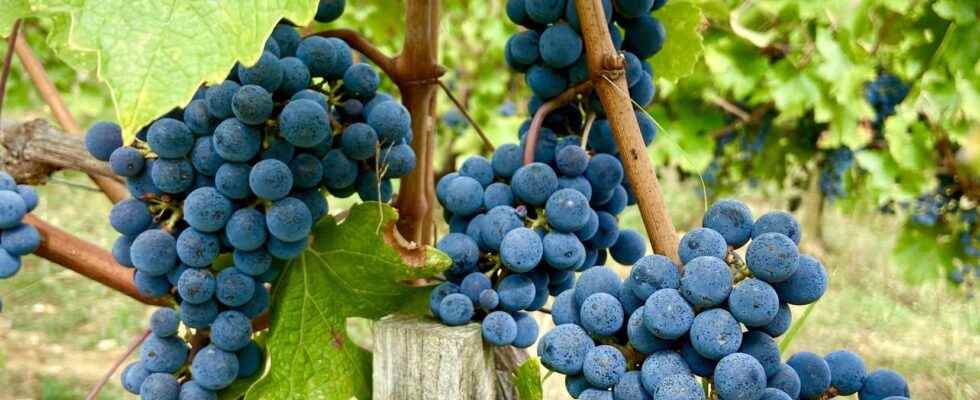The term “varietal wine” will undoubtedly appear as a pleonasm for some. This, even if there is also tomato, honey or atoca wine. Doesn’t the grape variety, that is to say the type of grape with which the wine is made, provide most of the juice used in its very production? Whether it is vinified as a single varietal or co-vinified with other faithful colleagues with whom he finds a dimension that was hitherto unknown to him, the grape variety is, like a letter of the alphabet, the vowel or the consonant that will ultimately be used to tell it during your next animated tasting.
If the grape variety has always existed, it was the Algerian Robert-Élie Skalli who marked out more precisely the location of native grape varieties in Languedoc in the 1920s by integrating them definitively into local production. It was the turn of his son Francis to consolidate its image in 1961 with the establishment of Les Chais du Sud facilities (in Corsica this time), a structure that his own son Robert would take over in the 1980s under the commercial brand Fortant de France, in the wake of the creation of the name “Vin de pays d’Oc” in 1987 with the complicity of his colleague Jacques Gravegeal at the time.
When I met him at the time at his home in Sète, in the south of France, Robert Skalli probably did not quite measure the impact of the immense commercial breath he was releasing. Both in its own country, but also internationally, where the Fortant de France brand was to become no more and no less than the ambassador of “varietal wine” while promoting the brand new appellation “Vin de pays d’ ‘Oc’, now known as ‘Pays d’Oc IGP’ (Protected Geographical Indication). The alphabet of the grape variety (and its 45 most popular varieties) suddenly becomes child’s play for the average consumer to learn about wine without worrying too much.
Democratized wine
The IGP Pays d’Oc draws its supplies from some 120,000 hectares (roughly the equivalent of the Bordeaux vineyard) that Languedoc-Roussillon conceals with its 240,000 well-counted hectares. More than 900 million bottles (including 10% labeled organic) for a production dominated by reds (for 45%), followed by rosés (30%), and too few whites for the remaining quarter.
If Chardonnay and Sauvignon Blanc are the most planted white grape varieties in Pays d’Oc IGP in addition to being the most appreciated by Quebecers, the fact remains that Syrah and Grenache Noir, at the top of the grape varieties in this same IGP , are being replaced here by Cabernet Sauvignon and Merlot. An example of a good salesperson at the SAQ? This Cabernet Sauvignon “L’Orangeraie” 2021 from the Lorgeril family ($14.90 – 13189973), in the Pays d’Oc, a red that is still just as clean, with ripe fruitiness quickly identifiable with its notes of peppery blackcurrant, its light tannins, but, above all, its lovely balancing freshness. (5) ★★ 1/2 No wonder he’s popular because he’s reliable. Year in and year out, moreover, producers and distributors alone generate more than five billion dollars in spin-offs, 48% of which comes from the export of wines of this type.
Although the “Vin de pays” finds most of its production, 80%, in the greater Languedoc region, many will wonder about this new name “Vin de France” (VDF), which, since 2009, has replaced that of “Table wine”, or VSIG (Wine without geographical indication). Simply cross out the notion of geographical reference for the VDF, and here is your winegrower embracing unlimited freedom with regard to the style of wine or the choice of grape variety used, alone or in blend, organic or not, provided of course that the nectar be bottled in France. Like the name of the winegrower who asserts his credibility on the label of a bottle of Burgundy, the VDF can in turn arouse frustration and disenchantment or contribute, in the best of cases, to playing the role of scouts for rare pearls.
Among these pearls, you must savor this natural multi-blend (Sauvignon Blanc and Gris, Sémillon and Chardonnay) from the clay-limestone subsoils of the high slopes of Cahors and produced biodynamically by Fabien Jouves at Mas del Périé. Its Les Agudes 2021 cuvée ($26.05 – 15008304) is both disinhibiting and comforting, as the lively fruity matter is displayed in its simplest element, proud and unfiltered. The grape varieties here find other referents by embodying themselves in this light dry white whose grain and tenacity of flavors take you elsewhere, far from the domestic codes of controlled appellations. With such wines from France, all that remains is to launch… long live France!
